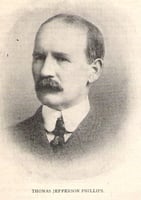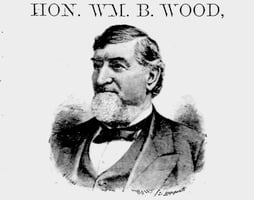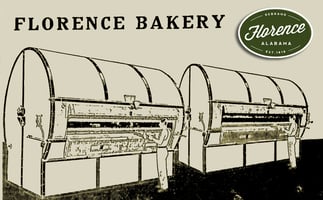Thomas J. Phillips, the “Merchant Prince” of East Florence, was President of the East Florence...
Maxwell Hill: Cutting Through the Landscape of Florence
Maxwell Hill in Florence, Alabama has undergone significant transformations over the years, shaping not only the physical landscape but also the way the transportation of the Shoals area operates. The hill is located where East Tennessee Street connects with Royal Avenue.
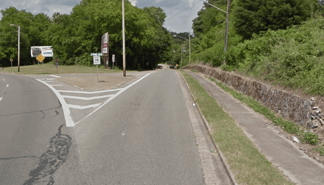 In 1879, the name "Maxwell Hill" made its first appearance in the local records. However, it is not known who the “Maxwell” is that the landmark was named after. It also wasn't until a decade later, in 1889, that Maxwell Hill truly began to shine with the installation of one of four new arc lights in the city of Florence, boasting an impressive 1700 candle power. This innovation marked a step towards modernity for Florence.
In 1879, the name "Maxwell Hill" made its first appearance in the local records. However, it is not known who the “Maxwell” is that the landmark was named after. It also wasn't until a decade later, in 1889, that Maxwell Hill truly began to shine with the installation of one of four new arc lights in the city of Florence, boasting an impressive 1700 candle power. This innovation marked a step towards modernity for Florence.
The city's dedication to improvement continued into 1890 when Maxwell Hill underwent a major facelift. The steep grade was lessened, and the hill was graded and improved. Blasting operations were initiated to tackle the challenging conglomerate rock, making way for a more accessible and aesthetically pleasing roadway.
The work continued through various weather challenges, and by April 1890, significant progress had been made. The street was widened to 90 feet, promising a more convenient passage through Maxwell Hill. However, the immensity of the project became evident, with the completion of the cut at the apex of the hill reaching a depth of sixteen feet.
Efforts to transform Maxwell Hill persisted, with a force of ten teams dedicated to grading work in July of 1890. The community's collective will was embodied by the commitment of individuals like Mr. Ed. Blair, who concentrated resources to expedite the process. The vision was to remove the barricade of construction on Maxwell Hill, allowing Tennessee Street to be opened up and graveled all the way down to Royal Avenue.
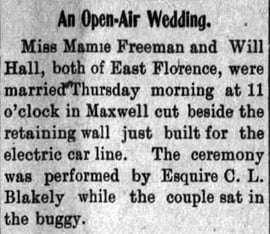 The significance of Maxwell Hill wasn't limited to its visual appeal or the ease of travel; it played a pivotal role in transportation. In 1905, a successful test was conducted to determine if freight could be hauled up the hill in large box cars. A loaded box car with 100,000 pounds of pig iron was effortlessly drawn up the steep incline, showcasing the engineering triumph over the challenging terrain.
The significance of Maxwell Hill wasn't limited to its visual appeal or the ease of travel; it played a pivotal role in transportation. In 1905, a successful test was conducted to determine if freight could be hauled up the hill in large box cars. A loaded box car with 100,000 pounds of pig iron was effortlessly drawn up the steep incline, showcasing the engineering triumph over the challenging terrain.
This noteworthy experiment with electricity demonstrated the feasibility of hauling big freight cars up Maxwell Hill using the street railway. This innovation aimed to streamline the delivery of merchandise to stores in Florence, marking a practical and efficient departure from traditional transportation methods.
The still-present retaining wall was constructed in 1903 following the path, and protecting the electric car line. A sidewalk now rests over the spot where the streetcar tracks once laid. That section of East Tennessee Street down to Royal Avenue is now often referred to as "Maxwell Cut" due to the construction just outlined in this Shoals History lesson.
Have you driven through Maxwell Hill?
